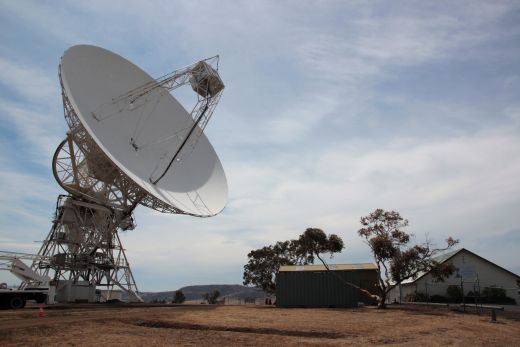
Tasmania is set to play a leading role in developing the nation's sovereign space domain awareness capabilities.
Tasmania is set to play a leading role in developing the nation's sovereign space domain awareness capabilities, through a collaboration between the University of Tasmania, the Tasmanian Government and HENSOLDT Australia.
Space domain awareness refers to the study and monitoring of artificial objects such as satellites and debris orbiting the Earth. As the number of satellites that are launched continues to increase, the need for innovative and cost-effective means to keep track of what is in orbit is a pressing issue that Tasmania is in a prime position to help solve.
The three organisations signed a memorandum of understanding today (Tuesday, 20 July) to form a united effort to create new ground support for space missions for and from Tasmania.
University of Tasmania Vice-Chancellor, Professor Rufus Black said the project leveraged Tasmania's unique geographical position and played to the research and development expertise of all partners.
"This partnership marks the beginning of an exciting next era for space research in Tasmania," Professor Black said.
"The only university in the world with a continent-wide array of telescopes, we have a significant history in space research built on the efforts of remarkably entrepreneurial astronomers.
"Our research has helped discover new planets, support the critical global positioning system and expand our understanding of what goes on in deep space.
"Our clear skies and unique southern location provide a rare geographical advantage for tracking polar orbiting satellites and space debris. We are ideally positioned to help build Australia's sovereign space tracking capabilities.
"Investing in space tracking and space domain awareness will have flow-on effects right across the Tasmanian economy, and the applications for this technology are endless.
"Early adoption and access to satellite data can deliver distinct competitive advantage to a wide range of industries, improving everything from our bushfire and crop monitoring practices to defence and forestry applications."
The University manages an array of five radio telescopes across Australia that enables communications between space and Earth. These telescopes can observe near-Earth orbiting objects such as satellites and space debris. Further afield, they are used to support distant space missions and study asteroids.
The project will capture and analyse this space observation data to track, categorise and identify objects.
As part of the collaboration, technology solutions company HENSOLDT Australia officially opened its Hobart office today.
The Hobart facility will be the project's centre for systems integration and data analysis and provide a local base to support space, maritime, clean energy and defence opportunities.
HENSOLDT Australia has also provided funding for a three-year PhD project that will see researcher David Smith assess how the University's telescopes can detect and monitor objects in space while simultaneously being used for astronomy or geodesy.
Dean of the School of Natural Sciences, Professor Simon Ellingsen said: "David's work will focus on refining our knowledge of the various space debris orbiting our planet, including things like leftover parts of rockets. These objects sometimes collide and split into multiple pieces, and tracking these events is critical to safely sending new objects into Earth's orbit."
The Australian Space Agency has identified building a sovereign space domain awareness capability as one of its seven key priorities. In September 2019, the State Government signed a memorandum of understanding with the Agency to grow and support Tasmania's capabilities in space medicine, ground stations and tracking facilities.






